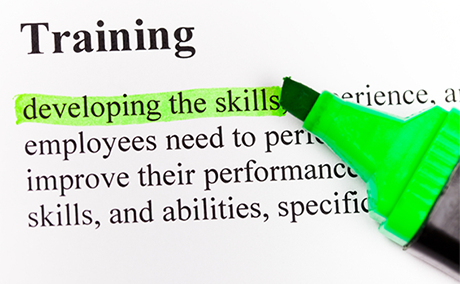Sharpening Documentation Skills Using Hands-On Training
How will they learn?
The Apostle Paul wrote a letter to the early church in Rome to encourage the early first-century believers to actively share their faith with others. He used a series of questions to make his point.
“But how can they call on him to save them unless they believe in him? And how can they believe in him if they never heard about him? And how can they hear about him unless someone tells them?” –Romans 10:14 NLT
It’s that last question that came to mind when we were preparing today’s blog post.
Paraphrased…How will they learn to document unless someone teaches them?
 EMS providers can’t learn to be good documenters unless those of us who are in leadership teach them how to be good documenters.
EMS providers can’t learn to be good documenters unless those of us who are in leadership teach them how to be good documenters.
Hands-on training is a great teaching method.
Practice Makes Perfect!
One effective way to help EMS providers hone their documentation skills is to practice. Consider using scenario driven instruction as one of the tools you use to help people understand what needs to be considered as they are preparing their Patient Care Report.
Many EMS agencies have regular scenario-based training. Provider classes at all levels have skill assessments as we practice and demonstrate proficiency in patient care techniques. We demonstrate what we know as providers by practicing and displaying our skills in hypothetical situations. We use mannequins, equipment, walk through hands-on and table-top exercises and we do so to sharpen our minds to instill the skills needed for when the emergency scenario involves real-life situations.
Practice makes perfect! Right?
So, why don’t we follow the same model when we teach documentation skills? Who says we can’t throw out some hypothetical scenarios, including assessment findings, vitals, visualize scenes, etc. and then ask EMS providers to write a hypothetical Patient Care Reports that reflects the scenario specifics?
Why not combine skills training with documentation training?
Consider, adding a documentation practice element when holding a skills training class. Ask the participants to spend some time following the hands-on portion of the skills training to then prepare a PCR that represents the mock emergency and then spend some time reviewing the practice PCRs generated in a type of peer review discussion.
Such an exercise will prepare EMS providers to become good documenters. Providing instruction in this matter is infinitely more effective than to attempt to instruct punitively once a poorly written, actual PCR is turned in.
We don’t send EMS providers out into the field until we are certain of their ability to do the job. Then why do we think that every EMS provider will just magically develop accurate documentation skills on their own?
Plan Ahead!
Start thinking right now about your next training time. How can you incorporate documentation training into the next session?
Remember to mix it up. If your EMS agency provides 9-1-1 emergency service but also handles routine scheduled and unscheduled transports, draw up some scenarios that mirror those situations, as well.
We often note that emergency documentation is more descriptive than non-emergency documentation and that has to do with a basic misunderstanding that the non-emergency trip is less important than the 9-1-1 run. From a billing perspective, the level of support that is necessary to justify payment of routine transports is sometimes far greater and less easy to justify in the documentation than emergency situations.
When doing these practice exercises, it’s best to have a time of Q&A to encourage the participants to dig deeper into the why’s of what they are being asked to do when preparing PCRs.
You’ll be surprised at the resulting benefits that can result from a hands-on practice experience.
Your EMS agency’s documentation will improve as a whole and your billing office will gain a new level of appreciation and the results will translate into increased reimbursement dollars!